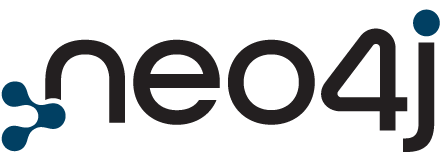DBMS > Amazon Neptune vs. MySQL vs. Sphinx
System Properties Comparison Amazon Neptune vs. MySQL vs. Sphinx
Please select another system to include it in the comparison.
| Editorial information provided by DB-Engines | ||||||||||||||||||||||||||||||||||||||||||||||||||||||||||||||||||||||||||||||||||||||||||||||||||
| Name | Amazon Neptune Xexclude from comparison | MySQL Xexclude from comparison | Sphinx Xexclude from comparison | |||||||||||||||||||||||||||||||||||||||||||||||||||||||||||||||||||||||||||||||||||||||||||||||
| Description | Fast, reliable graph database built for the cloud | Widely used open source RDBMS | Open source search engine for searching in data from different sources, e.g. relational databases | |||||||||||||||||||||||||||||||||||||||||||||||||||||||||||||||||||||||||||||||||||||||||||||||
| Primary database model | Graph DBMS RDF store | Relational DBMS | Search engine | |||||||||||||||||||||||||||||||||||||||||||||||||||||||||||||||||||||||||||||||||||||||||||||||
| Secondary database models | Document store Spatial DBMS | |||||||||||||||||||||||||||||||||||||||||||||||||||||||||||||||||||||||||||||||||||||||||||||||||
|
|
|
| |||||||||||||||||||||||||||||||||||||||||||||||||||||||||||||||||||||||||||||||||||||||||||||||
| Website | aws.amazon.com/neptune | www.mysql.com | sphinxsearch.com | |||||||||||||||||||||||||||||||||||||||||||||||||||||||||||||||||||||||||||||||||||||||||||||||
| Technical documentation | aws.amazon.com/neptune/developer-resources | dev.mysql.com/doc | sphinxsearch.com/docs | |||||||||||||||||||||||||||||||||||||||||||||||||||||||||||||||||||||||||||||||||||||||||||||||
| Developer | Amazon | Oracle | Sphinx Technologies Inc. | |||||||||||||||||||||||||||||||||||||||||||||||||||||||||||||||||||||||||||||||||||||||||||||||
| Initial release | 2017 | 1995 | 2001 | |||||||||||||||||||||||||||||||||||||||||||||||||||||||||||||||||||||||||||||||||||||||||||||||
| Current release | 9.0.0, July 2024 | 3.5.1, February 2023 | ||||||||||||||||||||||||||||||||||||||||||||||||||||||||||||||||||||||||||||||||||||||||||||||||
| License | commercial | Open Source | Open Source | |||||||||||||||||||||||||||||||||||||||||||||||||||||||||||||||||||||||||||||||||||||||||||||||
| Cloud-based only | yes | no | no | |||||||||||||||||||||||||||||||||||||||||||||||||||||||||||||||||||||||||||||||||||||||||||||||
| DBaaS offerings (sponsored links) Providers of DBaaS offerings, please contact us to be listed. | ||||||||||||||||||||||||||||||||||||||||||||||||||||||||||||||||||||||||||||||||||||||||||||||||||
| Implementation language | C and C++ | C++ | ||||||||||||||||||||||||||||||||||||||||||||||||||||||||||||||||||||||||||||||||||||||||||||||||
| Server operating systems | hosted | FreeBSD Linux OS X Solaris Windows | FreeBSD Linux NetBSD OS X Solaris Windows | |||||||||||||||||||||||||||||||||||||||||||||||||||||||||||||||||||||||||||||||||||||||||||||||
| Data scheme | schema-free | yes | yes | |||||||||||||||||||||||||||||||||||||||||||||||||||||||||||||||||||||||||||||||||||||||||||||||
| Typing | yes | yes | no | |||||||||||||||||||||||||||||||||||||||||||||||||||||||||||||||||||||||||||||||||||||||||||||||
| XML support | no | yes | ||||||||||||||||||||||||||||||||||||||||||||||||||||||||||||||||||||||||||||||||||||||||||||||||
| Secondary indexes | no | yes | yes | |||||||||||||||||||||||||||||||||||||||||||||||||||||||||||||||||||||||||||||||||||||||||||||||
| SQL | no | yes | SQL-like query language (SphinxQL) | |||||||||||||||||||||||||||||||||||||||||||||||||||||||||||||||||||||||||||||||||||||||||||||||
| APIs and other access methods | OpenCypher RDF 1.1 / SPARQL 1.1 TinkerPop Gremlin | ADO.NET JDBC ODBC Proprietary native API | Proprietary protocol | |||||||||||||||||||||||||||||||||||||||||||||||||||||||||||||||||||||||||||||||||||||||||||||||
| Supported programming languages | C# Go Java JavaScript PHP Python Ruby Scala | Ada C C# C++ D Delphi Eiffel Erlang Haskell Java JavaScript (Node.js) Objective-C OCaml Perl PHP Python Ruby Scheme Tcl | C++ Java Perl PHP Python Ruby | |||||||||||||||||||||||||||||||||||||||||||||||||||||||||||||||||||||||||||||||||||||||||||||||
| Server-side scripts | no | yes | no | |||||||||||||||||||||||||||||||||||||||||||||||||||||||||||||||||||||||||||||||||||||||||||||||
| Triggers | no | yes | no | |||||||||||||||||||||||||||||||||||||||||||||||||||||||||||||||||||||||||||||||||||||||||||||||
| Partitioning methods | none | horizontal partitioning, sharding with MySQL Cluster or MySQL Fabric | Sharding | |||||||||||||||||||||||||||||||||||||||||||||||||||||||||||||||||||||||||||||||||||||||||||||||
| Replication methods | Multi-availability zones high availability, asynchronous replication for up to 15 read replicas within a single region. Global database clusters consists of a primary write DB cluster in one region, and up to five secondary read DB clusters in different regions. Each secondary region can have up to 16 reader instances. | Multi-source replication Source-replica replication | none | |||||||||||||||||||||||||||||||||||||||||||||||||||||||||||||||||||||||||||||||||||||||||||||||
| MapReduce | no | no | no | |||||||||||||||||||||||||||||||||||||||||||||||||||||||||||||||||||||||||||||||||||||||||||||||
| Consistency concepts | Immediate Consistency | Immediate Consistency | ||||||||||||||||||||||||||||||||||||||||||||||||||||||||||||||||||||||||||||||||||||||||||||||||
| Foreign keys | yes | yes | no | |||||||||||||||||||||||||||||||||||||||||||||||||||||||||||||||||||||||||||||||||||||||||||||||
| Transaction concepts | ACID | ACID | no | |||||||||||||||||||||||||||||||||||||||||||||||||||||||||||||||||||||||||||||||||||||||||||||||
| Concurrency | yes | yes | yes | |||||||||||||||||||||||||||||||||||||||||||||||||||||||||||||||||||||||||||||||||||||||||||||||
| Durability | yes | yes | yes | |||||||||||||||||||||||||||||||||||||||||||||||||||||||||||||||||||||||||||||||||||||||||||||||
| In-memory capabilities | yes | |||||||||||||||||||||||||||||||||||||||||||||||||||||||||||||||||||||||||||||||||||||||||||||||||
| User concepts | Access rights for users and roles can be defined via the AWS Identity and Access Management (IAM) | Users with fine-grained authorization concept | no | |||||||||||||||||||||||||||||||||||||||||||||||||||||||||||||||||||||||||||||||||||||||||||||||
More information provided by the system vendorWe invite representatives of system vendors to contact us for updating and extending the system information, | ||||||||||||||||||||||||||||||||||||||||||||||||||||||||||||||||||||||||||||||||||||||||||||||||||
Related products and servicesWe invite representatives of vendors of related products to contact us for presenting information about their offerings here. | ||||||||||||||||||||||||||||||||||||||||||||||||||||||||||||||||||||||||||||||||||||||||||||||||||
| More resources | ||||||||||||||||||||||||||||||||||||||||||||||||||||||||||||||||||||||||||||||||||||||||||||||||||
| Amazon Neptune | MySQL | Sphinx | ||||||||||||||||||||||||||||||||||||||||||||||||||||||||||||||||||||||||||||||||||||||||||||||||
| DB-Engines blog posts | MySQL is the DBMS of the Year 2019 MariaDB strengthens its position in the open source RDBMS market The struggle for the hegemony in Oracle's database empire | The DB-Engines ranking includes now search engines Zupee implements Amazon Neptune to detect Wallet transaction anomalies in real time Use Amazon Neptune Analytics to analyze relationships in your data faster, Part 1: Introducing Parquet and CSV import and export Using generative AI and Amazon Bedrock to generate SPARQL queries to discover protein functional information with UniProtKB and Amazon Neptune | Amazon Web Services Introducing the GraphRAG Toolkit How Coinbase provides trustworthy financial experiences through real-time user clustering with Amazon Neptune provided by Google News MySQL at 30: Still important but no longer king Continuent Releases Tungsten Dashboard v8, an Upgrade to Its Web-Based Interface for Managing and Monitoring MySQL Clusters MySQL Explained: Your Guide to Mastering This Powerful Database 30 years of MySQL, the database that changed the world LockBit ransomware gang hacked, victim negotiations exposed provided by Google News Manticore is on search for new investment and partners Switching From Sphinx to MkDocs Documentation – What Did I Gain and Lose Brainiacs Episode 13: Sphinx Formations, Fake News, and “The Mom Penalty” Voice Recognition Tools Review. Alexa, PocketSphinx, Google API or Project Oxford? Create a Full Autocomplete Search Application with Elasticsearch, Kibana, NestJS and React provided by Google News | ||||||||||||||||||||||||||||||||||||||||||||||||||||||||||||||||||||||||||||||||||||||||||||||||
Share this page




